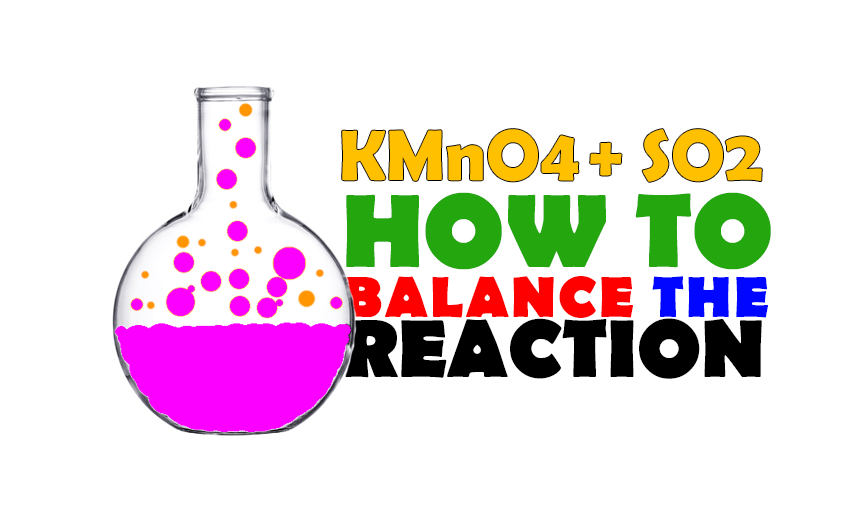This is a reaction in which the S (Sulpher) oxidation number and Mn (Manganese) are changing. Therefore, This reaction is a Redox reaction. Here, SO2 KMnO4 are the common chemicals in any chemistry research laboratory. In this particular reaction, sulfur dioxide and potassium permanganate are used as an aqueous solution. So they react with each other in the aqueous medium. The K2SO4, SO3, and MnSO4 produce through this reaction. As the reaction is a redox reaction, we can simply use the ion-electron method to balance this reaction.
About SO2 KMnO4
The SO2 (Sulfur dioxide) is a very well-known gas. This gas is soluble in water that means we can make an aqueous solution of SO2. It has a very ode smell as well as very harmful to our health.
The KMnO4 (Potassium Permanganate) is a very well-known chemical. It is a chemical with oxidizing properties as well as readily soluble in water.
Sulfur dioxide reacts with potassium permanganate (SO2 + KMnO4)
When Sulfur dioxide reacts with potassium permanganate, it produces sulfur trioxide, manganese sulfate, and potassium sulfate. In the aqueous medium-
SO2 + KMnO4 = SO3 + MnSO4 + K2SO4
This reaction is a redox (oxidation-reduction) reaction as the reactant’s oxidation number changes after products being produced. That clearly indicates that electrons are transferred from the reducing agent to the oxidizing agent.
If we notice on the oxidation number of the atoms or radicals present in the reactants and products in the above reaction, the oxidation number of S becomes +6 from +4 and on the other hand, the oxidation number of Mn becomes +2 from +7. Therefore, it is a redox reaction where SO2 acts as the reductant and KMnO4 acts as the oxidant.
Balancing the equation
Since this is an Oxidation-Reduction reaction, therefore, only by using the ion-electron method we can balance the above reaction in some simple steps.
The skeleton reaction for the redox reaction is-
SO2 + KMnO4 = SO3 + MnSO4 + K2SO4
Here,
The Oxidizing agent: KMnO4 or excluding the spectator ion MnO4-1
The Reducing agent: SO2 or, excluding unnecessary atom S+4
Reduction Half Reaction
The oxidizing agent MnO4-1 takes part in the reduction half-reaction. It accepts five electrons and the oxidation number reduces to +2 from +7. The Mn+7 takes up electrons from the reaction is released by the reducing agent present in the same reaction.
⇒ Mn+7 +5e = Mn2+ … … … (1)
Oxidation Half Reaction
As per the above discussion, we can learn that the Mn takes five electrons and reduced by the reducing agent. The reducing agent SO2 donates the electron(s). It releases two electrons and the oxidation number of sulfur becomes +6 from +4. Therefore, the oxidation half-reaction is-
⇒ S+4 – 2e– = S+6 … … … (2)
Now, Since the oxident accepts five electrons but the reductent released only two electrons, then there are two times oxidents needed for every five times of reducing agent. Now we add the oxidation and reduction half reaction after multiplying them with corresponding number to get the balanced full oxidation-rediction reaction. Let’s do so-
⇒equation (1)x2 + (2)x5,
2Mn+7 +10e– = 2Mn+2
5S+4 – 10e– = 5S+6
2Mn+7 + 5S+4 = 2Mn+2 + 5S+6
⇒ adding necessary ions and radicals we get,
2KMnO4 + 5SO2 = 2MnSO4 + 2SO3 + K2SO4
Thanks for reading the article. Please share this article with your friends and help us to improve contains by inspiring us by sharing.
Follow us on Twitter, Facebook, Linkedin, and Tumblr
Click to readily understand ion-electron balancing redox reaction


Leave a Reply